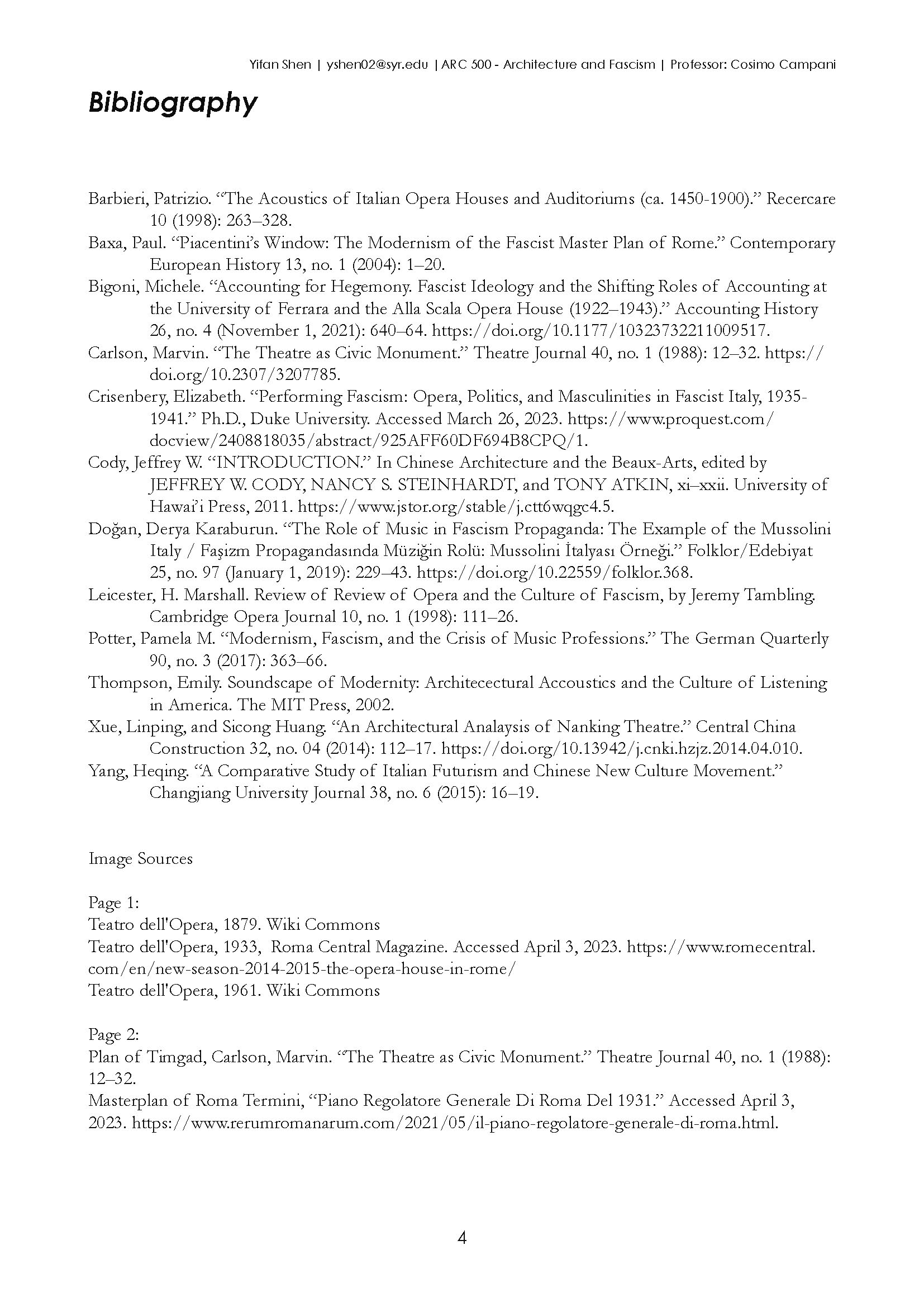The Regime and the Opera House
Published on The Crown Vol.1 , 2023
Site: Teatro Dell’Opera di Roma
Instructor: Cosimo Campani
Published on The Crown Vol.1 , 2023
Site: Teatro Dell’Opera di Roma
Instructor: Cosimo Campani
This essay delves into the multifaceted role of the Teatro
dell’Opera di Roma during the Fascist regime, with a
specific focus on its pivotal 1933 renovation under
architect Marcello Piacentini. The opera house served as
a propaganda tool, a leisure management instrument, and
a platform for promoting consumerism, aligning with the
political ideologies of its time. Through architectural
analysis, the study draws parallels between Teatro
dell’Opera di Roma, the Nanking Theatre in Shanghai,
and the Radio City Music Hall in New York, revealing
how these opera houses mirrored contemporary crises and
cultural shifts.
Examining the architectural evolution of Teatro
dell’Opera, the essay dissects its design choices, including
the reorientation of entrances and the creation of grand
foyers, illustrating a deliberate effort to magnify the opera
house’s role in social stratification and wealth display. By
connecting these design elements to global counterparts,
the research demonstrates the enduring influence of
consumerism and political agendas on opera houses, even
in the modern era. This study offers a comprehensive
analysis of how opera houses have functioned historically
as agents of political influence and cultural consumption.
Through this exploration, it constructs a compelling atlas
of political impact on social and cultural activities,
shedding light on the continued resonance of historical
ideologies in contemporary opera house practices,
ultimately enriching our understanding of the interplay
between architecture, politics, and society.








